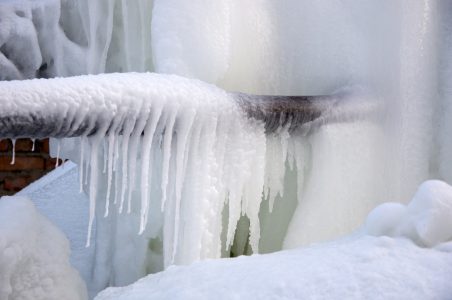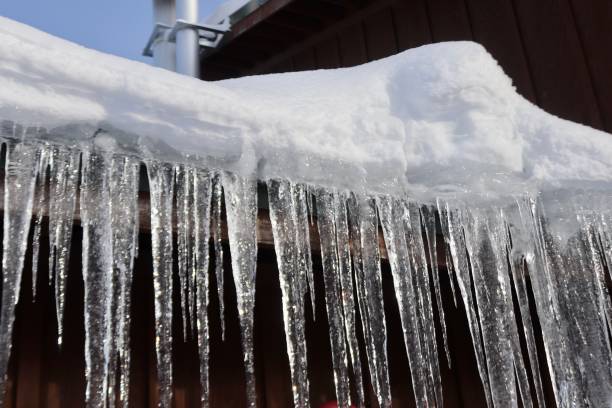Ways to Defend Plumbing System from Cold Weather: Essential Tips
Visit The Following PageEverybody seems to have their personal idea about Helpful Tips to Prevent Frozen Pipes this Winter.

Winter can wreak havoc on your plumbing, specifically by freezing pipes. Right here's exactly how to avoid it from happening and what to do if it does.
Intro
As temperatures decline, the danger of icy pipelines boosts, possibly bring about expensive repair services and water damage. Recognizing just how to avoid frozen pipes is crucial for property owners in cool climates.
Recognizing Frozen Pipes
What triggers pipes to ice up?
Pipes freeze when exposed to temperatures below 32 ° F (0 ° C) for prolonged periods. As water inside the pipes freezes, it broadens, taxing the pipe wall surfaces and potentially creating them to burst.
Threats and problems
Frozen pipelines can result in water supply interruptions, residential or commercial property damages, and costly fixings. Burst pipes can flood homes and create considerable architectural damage.
Signs of Frozen Pipes
Identifying frozen pipelines early can prevent them from rupturing.
Just how to identify icy pipelines
Search for reduced water circulation from faucets, uncommon smells or sounds from pipelines, and noticeable frost on exposed pipes.
Prevention Tips
Shielding prone pipes
Wrap pipelines in insulation sleeves or make use of warm tape to shield them from freezing temperatures. Concentrate on pipes in unheated or exterior locations of the home.
Heating methods
Maintain indoor rooms properly warmed, especially locations with pipes. Open cupboard doors to allow warm air to circulate around pipes under sinks.
Safeguarding Outdoor Pipes
Yard pipes and outdoor faucets
Detach and drain yard tubes before wintertime. Set up frost-proof spigots or cover outside faucets with shielded caps.
What to Do If Your Pipelines Freeze
Immediate activities to take
If you presume frozen pipes, keep taps open up to relieve stress as the ice thaws. Utilize a hairdryer or towels soaked in warm water to thaw pipes slowly.
Long-Term Solutions
Architectural changes
Think about rerouting pipes away from exterior walls or unheated locations. Add additional insulation to attic rooms, cellars, and crawl spaces.
Upgrading insulation
Buy premium insulation for pipes, attics, and walls. Correct insulation aids keep regular temperature levels and minimizes the danger of frozen pipes.
Final thought
Stopping icy pipes needs aggressive procedures and quick reactions. By recognizing the reasons, indications, and safety nets, home owners can safeguard their pipes throughout cold weather.
6 Proven Ways to Prevent Frozen Pipes and Protect Your Home
Disconnect and Drain Garden Hoses
Before winter arrives, start by disconnecting your garden hoses and draining any remaining water. Close the shut-off valves that supply outdoor hose bibs and leave the outdoor faucet open to allow any residual water to drain. For extra protection, consider using faucet covers throughout the colder months. It’s also important to drain water from any sprinkler supply lines following the manufacturer’s directions.
Insulate Exposed Pipes
Insulating your pipes is an effective way to prevent freezing. Pipe insulation is readily available at home improvement stores and is relatively inexpensive. Pay close attention to pipes in unheated areas such as the attic, basement, crawl spaces, or garage. Apply foam insulation generously to create a buffer against the cold. You can also wrap your pipes in heat tape or thermostat-controlled heat cables for added warmth.
Seal Air Leaks
Inspect your home for any cracks or openings that could let in cold air. Seal any holes around the piping in interior or exterior walls, as well as the sill plates where your home rests on its foundation. Additionally, make sure to keep your garage door closed unless you’re entering or exiting. Leaving it open creates a significant air leak that can lead to frozen pipes.
Allow Warm Air Circulation
During cold snaps, it’s essential to allow warm air to circulate evenly throughout your home. Leave interior doors ajar to promote better airflow. Open kitchen and bathroom cabinets to help distribute heat consistently around the rooms. If you have small children or pets, be sure to remove any household chemicals or potentially harmful cleaners from open cabinets for safety.
Let Faucets Drip
A small trickle of water can make a big difference in preventing ice formation inside your pipes. When temperatures drop significantly, start a drip of water from all faucets served by exposed pipes. This continuous flow helps prevent the water from freezing. Additionally, running a few faucets slightly can relieve pressure inside the pipes, reducing the chances of a rupture if the water inside does freeze.
https://choateshvac.com/6-proven-ways-to-prevent-frozen-pipes-and-protect-your-home/

Do you really like reading about Helpful Tips to Prevent Frozen Pipes this Winter? Try leaving a review further down. We will be pleased to know your opinions about this page. Hoping that you visit us again soon. Loved our review? Please quickly share it. Help others locate it. We value reading our article about How to prepare your home plumbing for winter weather.
Visit My Web Page